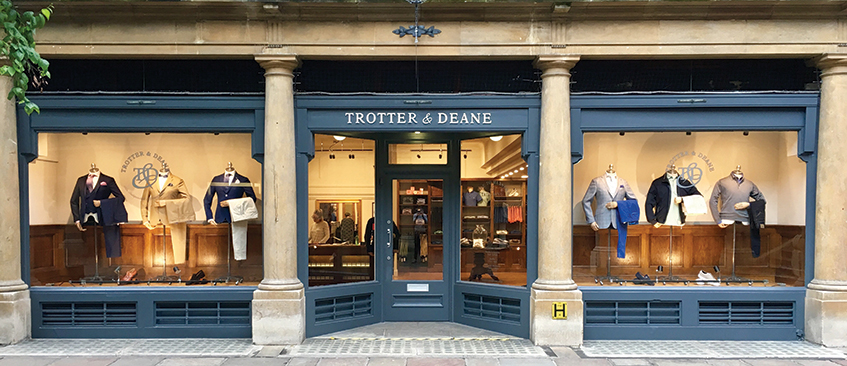What’s attracting investors to East Anglia?
COMMENT: Cambridge was recently voted the UK’s top retail location. In a report from Harper Dennis Hobbs, the city ranked higher than Knightsbridge or Westfield and is now on luxury retailers’ radar.
However, what we are seeing is a mixed picture, with premium locations reporting rent reductions while secondary streets hold firm, says Edward Dodson, director at Cheffins.
Regional high street markets are subdued, as the effects of competition from online shopping, increased rates liabilities and uncertainties over Brexit affect retailers and shoppers.
COMMENT: Cambridge was recently voted the UK’s top retail location. In a report from Harper Dennis Hobbs, the city ranked higher than Knightsbridge or Westfield and is now on luxury retailers’ radar.
However, what we are seeing is a mixed picture, with premium locations reporting rent reductions while secondary streets hold firm, says Edward Dodson, director at Cheffins.
Regional high street markets are subdued, as the effects of competition from online shopping, increased rates liabilities and uncertainties over Brexit affect retailers and shoppers.
While food-based retailers such as Itsu, Wasabi and Leon, as well as discount retailers, remain active with ongoing space requirements, demand from traditional retailers is low.
Cambridge has seen the consolidation of a number of high street stores, with Karen Millen, Jigsaw and Dune choosing to relocate to shopping centre locations or concessions. This trend is also mirrored in secondary locations in smaller centres, which are suffering from higher occupational costs leading to a rise in voids.
Some of Cambridge’s key shopping streets have seen rent reductions of around 10%. However, this is not reflected in the city’s secondary shopping streets, where demand remains high and rents have held firm.
Top secondary streets such as Trinity Street and Sidney Street are now seeing rental values well over £100 in zone A, so some retailers are looking at other streets to find value.
Sussex Street, for example, has recently seen an influx of high-end brands such as premium menswear brand Trotter & Deane and interiors company Fired Earth. These are the types of companies looking to get a foothold in Cambridge, but only in secondary shopping locations where rents remain justifiable.
While high street chains may be being cautious, local independent companies are taking this opportunity to expand into new units or relocate to better stores. Premier Travel recently relocated its Bishops Stortford unit from Market Square to a prime location on South Street and to a new unit in St Neots town centre.
In Huntingdon, which has bucked the trend with new schemes attracting the likes of M&S and TK Maxx, we at Cheffins advised Premier Travel on extending the lease of its prime high street unit at a greatly reduced rent. This is reflective of landlords’ appetite to maintain rental income, even at lower levels, rather than face void periods and empty rates liabilities.
For private investors, retail offers a good opportunity for those looking to purchase well-located and well-let properties priced at up to £5m. With yields at around 5.5-6%, the East Anglian market towns bring good returns with limited void periods.
For those looking to spend around £10m and put their money into retail property, we would recommend prime or good secondary locations in centres such as Norwich and Cambridge.
The volume of properties of this type coming to the market varies year-on-year, depending on whether investors do deals on portfolios or single units. Bury St Edmunds would probably see around three or four good investment properties coming to the market per year, whereas Saffron Walden would see significantly fewer.
Often Cambridge will be affected when larger funds sell units from UK-wide portfolios. Self-contained units with both retail and residential space will be the most popular.
Although a number of opportunities are available by private treaty – for example the Hughes TV unit on St John’s Street in Bury St Edmunds, which sold at a yield of around 6% – we are also seeing an increasing number being offered and sold at auction.
Buying properties such as these at auction is a specialist field and investors need to ensure that all necessary research has been carried out before bidding.
Properties with vacant or underused upper floors are proving particularly popular as investors look to re-gear leases and intensify use while enhancing the value of the property. Local councils are keen to allow change of use for upper floors in order to maintain the vitality of town and city centres.
Similarly, many of the towns in East Anglia are suffering from housing shortages, so change of use to residential from retail is particularly popular in the likes of Cambridge, Saffron Walden, Bury St Edmunds and Bishops Stortford.











